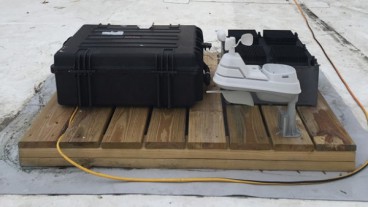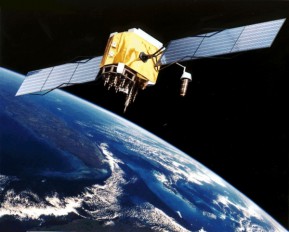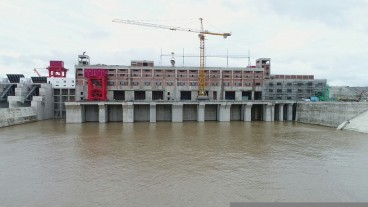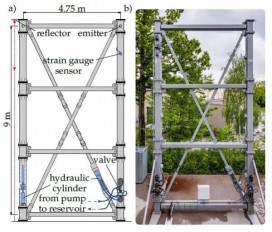Measuring the temperature of 3D objects using depth thermography

Scientists from the University of Wisconsin-Madison, have introduced a new method to remotely measure the temperature within 3D objects.
The new technique that is called "Depth Thermography", can derive the temperature of an object as a function of depth by utilizing "thermal-emission spectrum in the semitransparent spectral region of the target object".
The new findings were recently published in ACS Photonics.
Depth Thermography can be used in items where current sensors are inapplicable. Those sensors usually measure the infrared spectrum from an object to derive their actual temperature.
Every object that has a temperature greater than absolute zero emits energy. The amount of the emitted energy increases with temperature. Based on this principle, infrared thermography detects the infrared energy emitted from an object and then converts it to temperature.
Nevertheless, Depth Thermography utilizes another approach to measure the temperature of materials that are "transparent" to infrared radiation such as semiconductors and future nuclear reactors that will use a fluid fuel in the form of very hot fluoride or chloride salt (Molten Salt Reactors)."...we anticipate relevance to molten-salt nuclear reactors, where you want to know what’s going on in terms of temperature of the salt throughout the volume. You want to do it without sticking in temperature probes that may not survive at 700 degrees Celsius for very long,” Mikhail Kats, co-author of the study and a Professor of Electrical and Computer Engineering at the University of Wisconsin–Madison, stated.
Researchers examined their method by heating fused quartz, a type of glass that consists of non-crystalline silica. Having already conducted experimental tests on the material, they utilized computational tools developed by Yuzhe Xiao, lead author of the study and a Postdoc researcher at the University of Wisconsin-Madison, to derive the thermal radiation of the item and back-calculate the temperature gradient within the object in order to fit the experimental data. This endeavor was useful to prove that the method is reliable and accurate.
The new technique is completely remote and does not necessitate the utilization of sensors to detect the temperature of an object. The method may also be utilized in deriving the temperature of heated gases and liquids. "Depth thermography may enable non-contact volumetric temperature measurements of microscopic objects such as multilayer electronic devices or macroscopic volumes of liquids and gases, as well as simultaneous all-optical measurements of optical and thermal properties of materials," the study, mentions.
The scientific team plans to apply the new method to more complex materials and utilize machine learning to optimize their technique in the future.
Details on the mathematical techniques utilized to make the method function can be found here.
Source: University of Wisconsin-Madison
Source: University of Wisconsin-Madison
Want to read more like this story?

MIT-developed device generates power from the air’s temperature changes
Mar, 20, 2018 | NewsCalled a thermal resonator, the device relies on temperature fluctuations between day and night to p...

Satellites can help detect geothermal energy under our cities
Feb, 29, 2016 | NewsLinking Surface Urban Heat Islands with Groundwater Temperatures Linking Surface Urban Heat Islan...

Study shows that hydropower dams reduce the temperature of rivers
Mar, 06, 2020 | NewsA new study, published in the Environmental Research Letters journal, focuses on the impact of hydr...

Climate change brings new challenges in road surfaces
Jul, 24, 2019 | NewsAccording to a new study, the thickness of asphalt layers should increase by 7% to 32% in order...

How to reduce temperature in urban environments
Jul, 29, 2019 | NewsA new study conducted by the Portland State examines how vegetation and reflective materials can low...

New technique to monitor structural deformation in real time
Mar, 16, 2020 | NewsScientists have developed a new, low-cost method to detect and precisely measure the deformation of...

The Earth Is Still Too Hot!
Jun, 08, 2015 | NewsDespite the widespread impression that in recent years there has been some respite and slowdown in c...

Yosemite granite could change the current geological history
Jul, 12, 2018 | NewsThe temperature of granite crystallization underpins the knowledge about many geological phenomena,...

How will trees cope with ever-rising temperatures and extreme heatwaves?
Mar, 09, 2018 | NewsAustralian researchers have made an interesting new observation Australian researchers have made an...
Trending

Vertical gardens in Mexico City to combat pollution

Saudi Park Closed After 360 Big Pendulum Ride Crashes to Ground, 23 injured

Characteristics of Load Bearing Masonry Construction

Taipei 101’s impressive tuned mass damper

Dutch greenhouses have revolutionized modern farming

Federal court rules Biden’s offshore drilling ban unlawful


